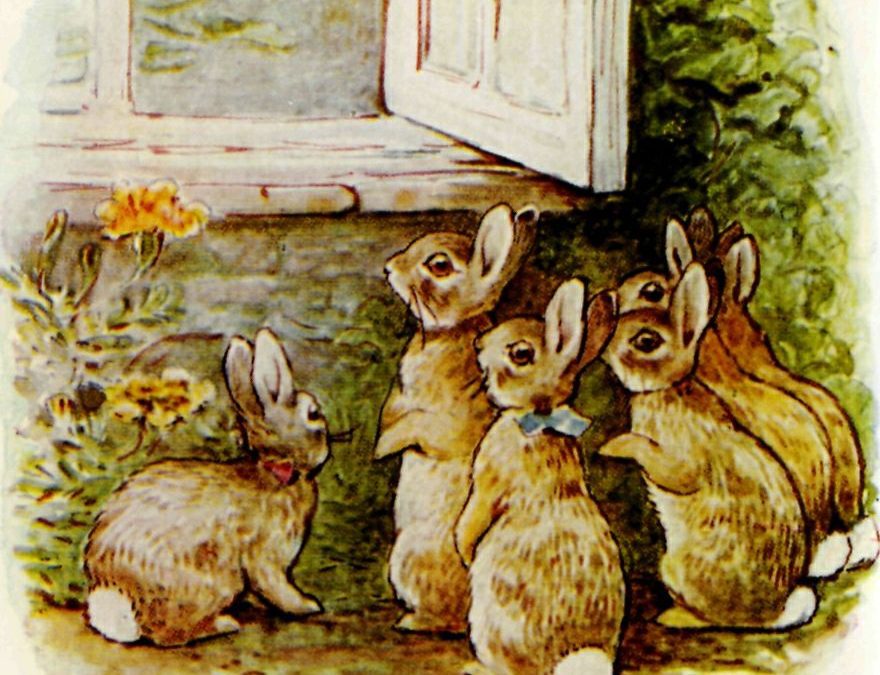
‘For little rabbits’: a guide to the books of Beatrix Potter
Items featured in this blog are drawn from a remarkably complete Beatrix Potter collection displayed by Peter Harrington in 2016. You can still view the catalogue online here, as well as our Beatrix Potter items currently in stock here.
Beatrix Potter (1866-1943) grew up in Bolton Gardens, Kensington, just round the corner from our Fulham Road shop, where she and her brother Bertram built quite a menagerie in the schoolroom at the top of the house, occasionally smuggling in animals without their parents’ knowledge. In 1890, Beatrix had her first drawings published, in a piece of holiday ephemera titled A Happy Pair. It features six illustrations of her pet rabbit Benjamin (the forerunner to Peter). He was a “handsome tame Belgian rabbit”, very fond of hot buttered toast, who would run into the drawing room when he heard the tea-bell:
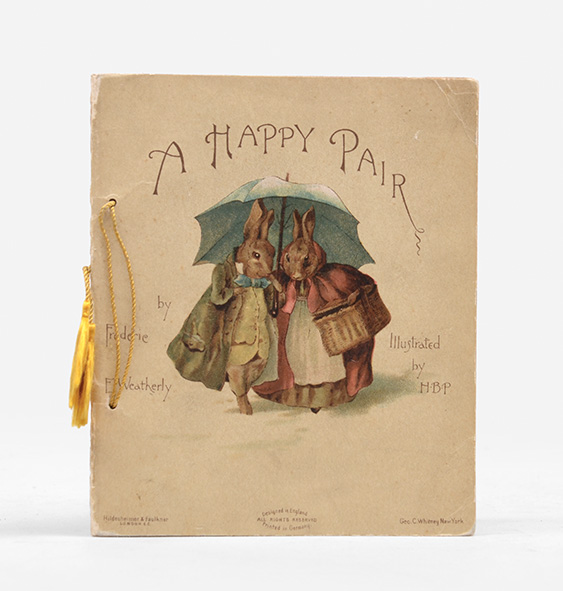
Also on display we have a superb original manuscript featuring nine ink and watercolour drawings by Beatrix, drawn around 1896. Titled La Chanson de la mariée, it’s an amusing set of cartoons of a wedding, accompanied by a poem in French, which Beatrix has written out by hand. She copied these drawings from work by Henri Gerbault, a French illustrator and watercolourist, to improve her figure drawing, which she always acknowledged was a weak point – she once said “they are a terrible bother to me when I have perforce to bring them into the pictures for my own little stories”.
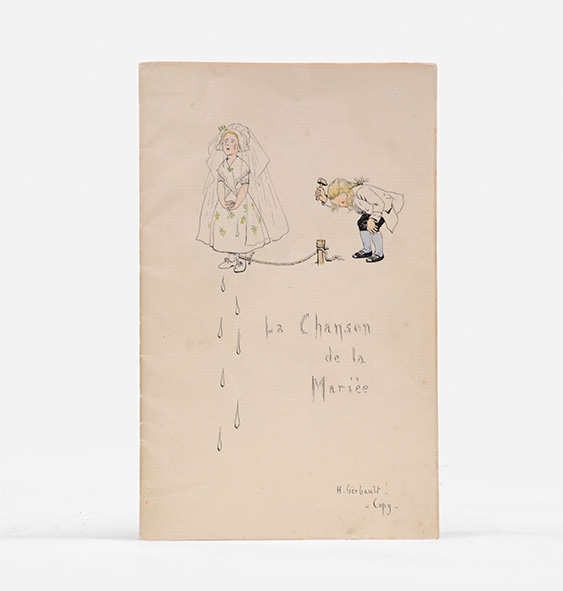
Around the same time she drew these figures, Beatrix was also pursuing a very different type of drawing. She was an amateur mycologist and scientific artist, and in 1896 began to work on a scientific paper on spore germination. We have a fascinating copy of Peter Rabbit inscribed to a J. Squire who helped her acquire a specimen as part of her research on the fungal properties of dry rot. He delivered the specimen to Bolton Gardens in a brown paper bag, where she hid it under a stone in the garden, for fear of her parents’ disapproval (“How I should catch it, my parents are not devoted to the cause of science”, she wrote in her journal). Quite understandable – given its destructive properties! Beatrix’s paper “On the germination of the spores of Agaricineae” was presented on her behalf on 1 April 1897 to the Linnean Society, as women were prohibited from speaking or attending; she noted that it was “well received” but required amendments, and she withdrew the paper. It was never published, and no copy exists today.
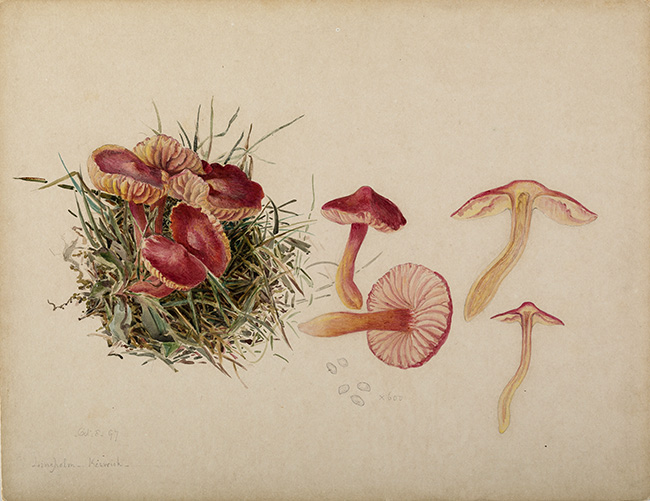
Mycological illustration courtesy of the Armitt Trust
Beatrix’s life in Kensington was rather lonely and sheltered, with close friendships discouraged by her parents. She had only her brother Bertram for companionship until he was sent to boarding school at the age of 11. Her happiest time in Bolton Gardens was perhaps with Annie Moore, who was hired when Beatrix was 17 years old as her German tutor and companion. After Annie’s marriage, the two stayed closely in touch, and Beatrix often wrote illustrated letters to Annie’s children. Of course, the most famous of these was the first incarnation of Peter Rabbit, sent to the eldest, five-year-old Noel, when he was sick with scarlet fever, on 4 September 1893. A few years later, in 1900, Beatrix thought it might make a small book, and borrowed it back to expand the story into a book. A percipient businesswoman, she knew exactly how she wanted to publish the story: it had to be affordable for “little rabbits” and in a small format – just the right size and weight for small hands. Unable to find a publisher who would accept her proposed format, she published Peter Rabbit herself in a private edition.
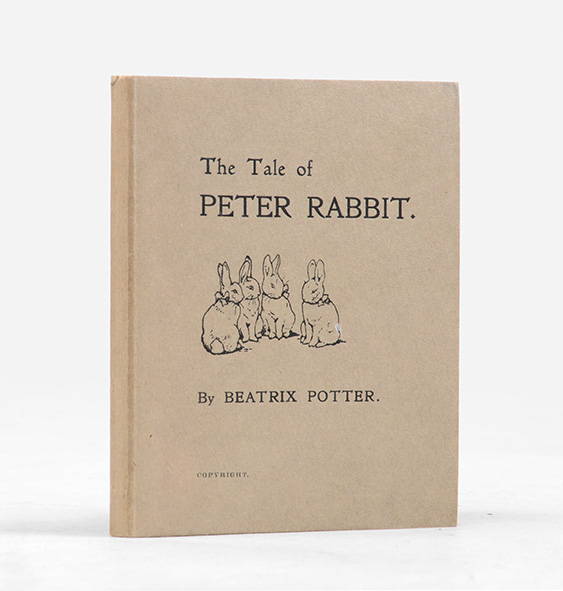
The privately-printed edition was ready on 16 December 1901 in an edition of 250 copies. Within two weeks it proved so popular that she commissioned a second impression. Meanwhile, Warne rethought their earlier rejection, and undertook the “Bunny book” project, as they termed it. It proved so popular that the Warne edition of 8,000 copies sold prior to publication; the collaboration between Potter and Warne would last almost the rest of her life.
Perhaps surprisingly, though, Peter Rabbit was not Beatrix’s favourite book. That honour goes to her second book, The Tailor of Gloucester. Again, it started life as a story for one of the Moore children, and was a Christmas present for Freda Moore in 1901. Just as she had done with Peter Rabbit, Beatrix first had the book privately printed (Warne had not yet published Peter Rabbit and she did not think they would want a second so soon). It is unique in the series with its period setting (Potter drew the costumes from the collection at the V&A museum), and was based on a true story that Potter had heard while staying in Gloucestershire: an elaborate waistcoat had been commissioned for a grand mayoral occasion, but the tailor lacked the time to complete it and needed another packet of cherry-coloured silk – though more prosaically, it was his two assistants who had secretly finished the work.
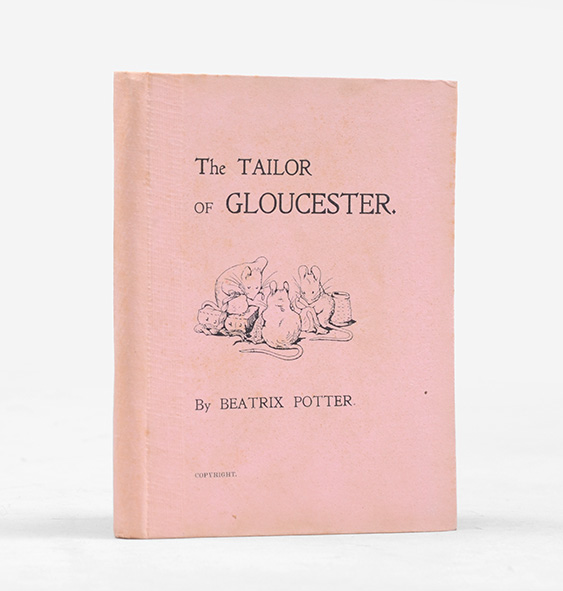
Even less well-known is a sequel of sorts to the Tailor of Gloucester – Wag-by-Wall, about a lonely old woman. Beatrix thought the two would make a pair, but the second book had a somewhat chequered road to publication: it was first written in 1909 under the title The Little Black Kettle, but the manuscript was left unfinished. Potter picked up the story in 1929, before again dropping it, and finally finished it in 1940 for The Horn Book Magazine. The editor liked it so much that she decided to hold it back for the 20th anniversary edition, where it was finally published in May 1944. Sadly, Beatrix died in December 1943, aged 77, and never saw the story in print.
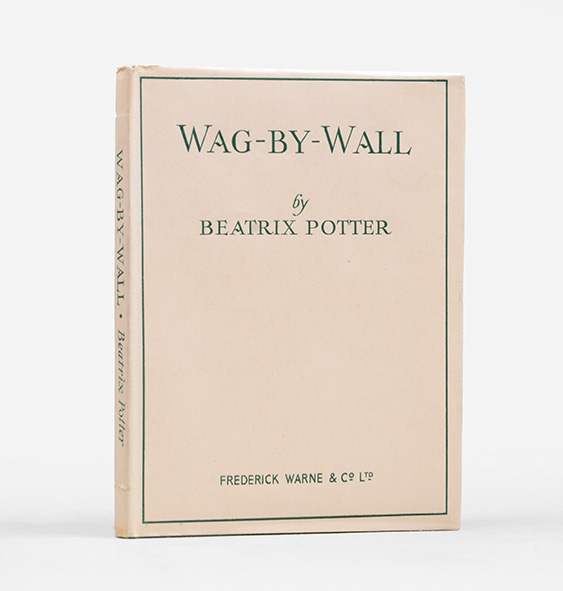
Another story which took a while to see publication was The Tale of Jeremy Fisher. The idea originated with a picture letter to Eric Moore on 5 September 1893, which began: “My dear Eric, Once upon a time there was a frog called Mr. Jeremy Fisher, and he lived in a little house on the bank of a river…”. These illustrations were sold to the publisher Nister in 1894, and appeared in 1896 in two collections by Nister – Comical Customers and the Nister Annual.
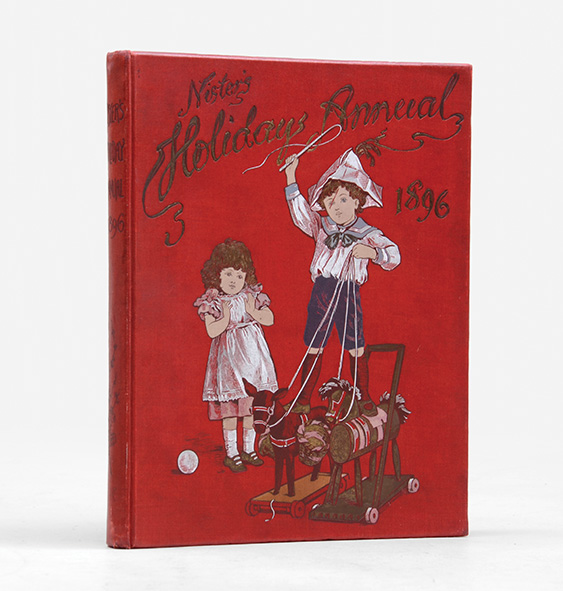
Beatrix was disappointed that Nister refused to publish them as a small booklet, telling her that “we certainly cannot make a booklet of it as people do not want frogs now”. Potter bought back the copyright and blocks for the illustrations shortly after publication of the Tale of Peter Rabbit, and resumed work on the story after the death of her fiancé, Norman Warne. Shortly after Norman’s funeral, she left London to sketch in North Wales and the Lake District, and, needing a project to work on, was determined to see Jeremy Fisher finally published. Nine years after she had conceived the idea, her frog book was finally agreed for publication.
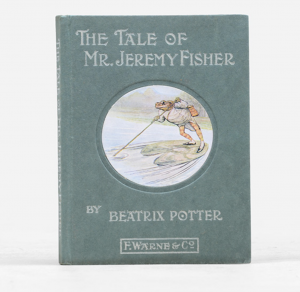
The year that Norman died marked a huge shift in Beatrix’s life. She bought Hill Top, a working farm in Near Sawrey, in the Lake District, with royalties from her books and a legacy from an aunt. From then on, her books also began to reflect more of her life there. We have a fascinating letter written around 1909, accompanying a copy of Ginger and Pickles, written by Beatrix to the previous owner of another farm she’d just bought. Ginger and Pickles was based on the village shop in Sawrey, owned by John Taylor. In the letter, she explains the book’s connection to him: “You will see it is dedicated to old John Taylor, he took such an interest in it, when I was sketching in ‘the shop’, but he just died after the type was set up and before he could have a finished copy … Poor old John was put in the book at his own request, the dormouse in bed is thought to be rather like him.”
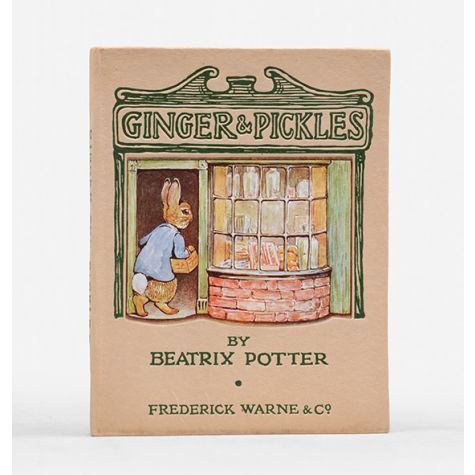
With her royalties from the series, Potter amassed over 4,000 acres of land in the Lake District which she bequeathed to the National Trust on her death, together with strict instructions on conservation and land management, without which the Lake District would be a very different place today.
Beatrix Potter currently in stock

Recent Comments